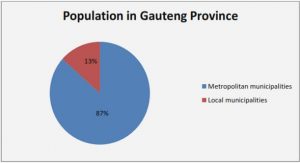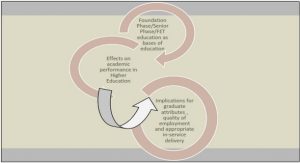Get Complete Project Material File(s) Now! »
Background
This document investigated the research question whether individual value systems and risk propensities have an influence on decision-making quality in value clashing circumstances, and how it can it be addressed. It delved into the hypothesised relationship between the personalistic attributes (both value- and risk orientations) of people and their observed decision-making behaviour. More specifically, the study examined whether the decision- making quality produced by the participants were attribute dependent and whether it could be altered and/or improved using scenario reframing. The extant literature on decision-making behaviour still contains several gaps. As the literature review will show, most authors opted for prescriptive rather than descriptive approaches in addressing decision-making behaviour. Managers are given models of optimal decision- making or informed what ethical or good decision-making is.
Little though has been done to describe the decision-making process, especially from a personal value-system and risk preference standpoint. Since most studies then focused retrospectively on the outcome of decisions, they neglected to note how managers behave during decision-making. This study differed in that it dealt with a specific component of decision-making, decision-quality, as the decision was being made. This approach was argued to be of greater importance and relevance to participating decision-makers as it presented practitioners with a real-time practical assessment and intervention route through which to improve decision-making quality whilst the process was is in progress.
This study has wider application than individual decision-making and personality attributes though, as macroeconomic themes dominating the business landscape can attest. The world- wide recession of 2008/2009 has placed severe pressure on business resources and has redefined what success, survival and profitability means to organisations. (Amit and Zott, 2010; Barbier, 2011). The far reaching influence of globalisation (Bunker & Ciccantell, 2005), continually reshapes and reconstitutes an already challenging decision-making landscape and it seems that society gets exposed to ever more permeable moral boundaries. With the possibility of business failures, a clear and present threat and multi-culturalism blurring expected behaviour, managers may be tempted to compromise on personal value systems or force their personal risk-taking profiles to gain access to critical firm resources.
In this vulnerable state, managers are confronted with the variety of cultural orientations introduced by the global village. It therefore stands to reason that a decision-making landscape made more complex with dwindling resources and varying value sets, will have a negative impact on decision-making behaviour. The literature review produced a thorough understanding of decision-making behaviour and how the literature describing it is positioned within the business science body of knowledge. Our knowledge of organisational behaviour stands central to our understanding and explanation of the complex interactions occurring in the firm environment and as such is an important perspective on business science. The organisational behaviour body of knowledge deals with both micro and macro aspects of behaviour in firms, but it is the former focus that relates best to value clashes – the setting of the study.
Closer scrutiny of the micro focus revealed both individual and interpersonal perspectives on human behaviour in the organisation, with the former relating to the attributes of the actors within the system, and the latter referring to interactions between said actors. To understand the factors influencing people at the individual level (the level of analysis chosen for this study), a better understanding of personal psychology was required. To this end the areas around individual decision-making, personal motivators such as values, beliefs and attitudes, and personality traits such risk propensities were investigated. The research was therefore set within the behavioural paradigm of decision theory. Although substantial work has been done to enlighten our understanding of value- and risk- driven decision-making (Rokeach, 1973; Braithwaite & Law, 1985; Schwartz, 1994), the focus to date has been prescriptive rather than descriptive. Authors cared more for an investigative line ensuring people make the right decisions, instead of trying to find out how to make good (or higher quality) decisions.
Perhaps a focus on quality can shed some light. Literature distinguishes between two concepts: fitness of purpose – doing the right things, and fitness for purpose doing things right (Reeves & Bednar, 1994). This is an important distinction, as it differentiates between two core interpretations of decision quality. The position taken for this study was to move away from a preconceived notion of what is right or wrong towards the idea of what is better. This was therefore not a study of decision ethics, but rather a study of decision-making behaviour aimed at improving the quality of the process rather than judging its outcome. This study did not pretend to consider all individual, interpersonal and system factors impacting on decision-making in the organisation, but was rather positioned to examine one specific phenomenon in detail. The expectation of this investigation was thus to further our understanding of decision-making under difficult and value-conflicting situations through the development of an effective management intervention.
Problem Statement
It stands to reason that the modern decision-making process has become extremely complex and laboured. Managers make decisions from a point of bounded rationality (Bazerman & Moore, 2013; Cyert & Marsh, 1963; Kahneman, 1991; Slovic, Fischhoff, & Lictenstein, 1984; Tversky & Kahneman, 1975), limiting their cognisance of all aspects of the decision hence negatively impacting the opportunity for optimal decision-making. Organisations on the other hand operate in a confined environment, often containing limited resources and direct competitors. They do not fully understand all the influences on and drivers behind decision-making and as such have exposed themselves to undue risk and organisational inefficiencies.
Resource-dependence theory (Graetz & Smith, 2010) holds that organisational behaviour will be affected by access to valuable resources and that resource scarcity would contribute to firm uncertainty and its related risk exposure. With most firms not in possession of the critical resources required to survive in a very tough environment, access to these resources becomes a high priority. This invariably leads to pressure on managers to facilitate this access on behalf of the firm resulting in a complication of the decision-making space. Thus, against this tension and considering the complexities brought about by a post-recession (Acharya, Philippon, Richardson, & Roubini, 2009; Roubini, 2008), post globalisation context (G. A. Wilson, 2012), intra-firm and inter-firm value clashes due to differences in individual motivations, value-sets and risk propensities are unavoidable (Kocet & Herlihy, 2014; MacMillan & Wastell, 2008). Managers with varying motivations, agendas and personal convictions can hardly be expected to agree on all decisions (McGraw & Tetlock, 2005; Schoemaker & Tetlock, 2012). A new understanding of the decision-making process, specifically under stressed situations, is therefore required.
Table of Contents
- Abstract
- Declaration
- Acknowledgements and dedication
- Table of Contents
- List of Figures
- List of Tables
- Chapter
- Introduction
- 1.1 Background
- 1.2 Problem Statement
- 1.3 Purpose Statement
- 1.4 Research Objectives
- 1.5 Proposed Benefits of the Study
- 1.6 Assumptions and Research Paradigm
- 1.7 Delimitations of the Study
- 1.8 Definition of Key Terms
- 1.9 Conclusion
- Chapter
- Literature Review
- 2.1 Introduction
- 2.2 Integrative View of the Decision-making Literature
- 2.3 Setting of the Research in the Risk Perception/Risk Preference Paradigm
- 2.4 Individual Value Systems and Value Clashes
- 2.5 Integrated Discussion of Literature Review and Research Problem
- 2.6 Conclusion
- Chapter
- Research Design and Methodology
- 3.1 Introduction
- 3.2 Research Paradigm
- 3.3 Detail Design of the Research
- 3.4 Research Question(s)
- 3.5 Research Model
- 3.6 Data Gathering Instruments
- 3.7 Sample Description
- 3.8 Data Sources
- 3.9 Practicality of the Data Gathering Process
- 3.10 Social Desirability Bias
- 3.11 Ethical Concerns
- 3.12 Data Analysis Techniques
- 3.13 Conclusion
- Chapter
- Results
- 4.1 Introduction
- 4.2 Evaluation of Instruments
- 4.3 Value orientations and Risk Propensities (Descriptive Statistics)
- 4.4 Decision-making Results
- 4.5 Qualitative Results
- 4.6 Conclusion
- Chapter
- Discussion
- 5.1 Introduction
- 5.2 Discussion of the Sample, Research Design, Instruments and Experimental Design
- 5.3 Mini Case Studies
- 5.4 Interpretation of Results
- 5.5 Contributions
- 5.6 Future research
- 5.7 Conclusion
- Chapter
- Conclusion
- 6.1 Introduction
- 6.2 Significance of the study
- 6.3 The literature foundation
- 6.4 Addressing the gap in literature
- 6.5 Findings
- 6.6 Literature contribution
- 6.7 Methodological contributions
- 6.8 The importance to practitioners
- 6.9 The importance to business
- 6.10 Future research
- 6.11 Conclusion
- List of References
Doctor of Philosophy at the Gordon Institute of Business Science






